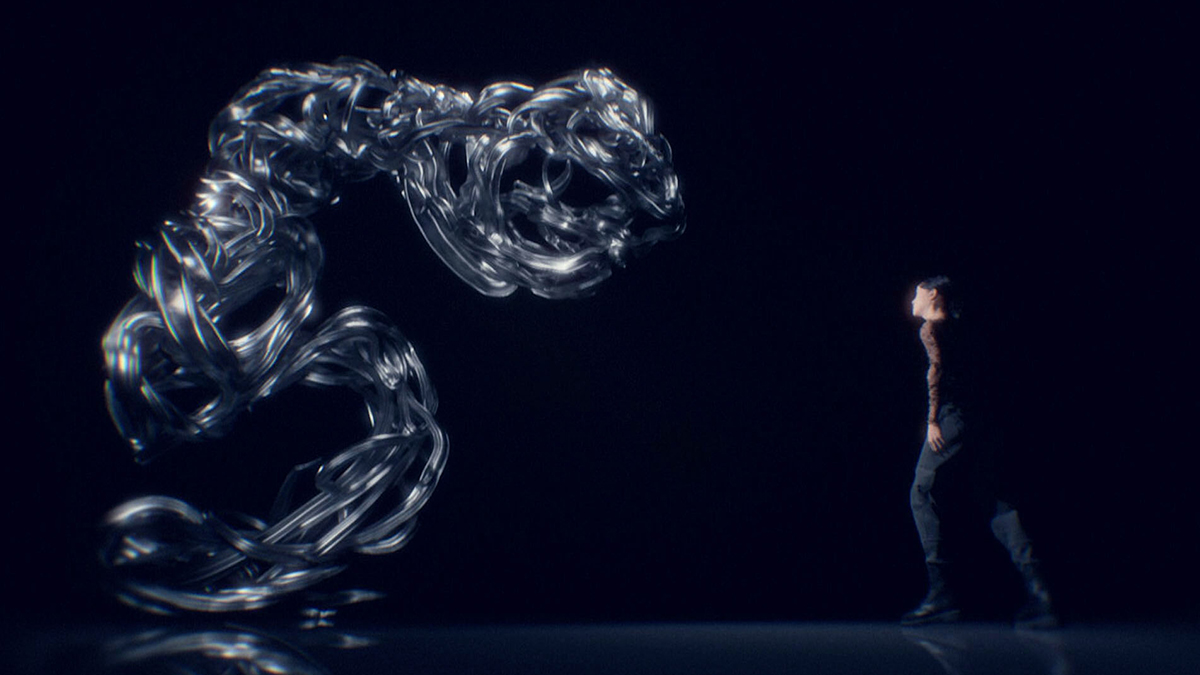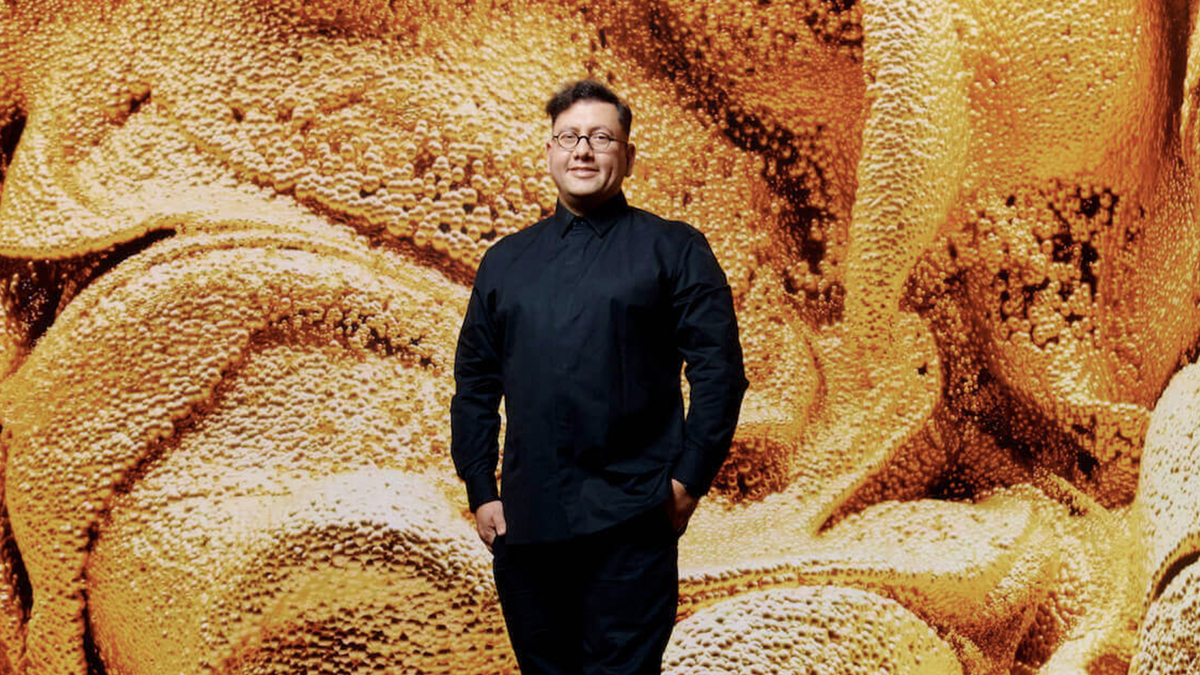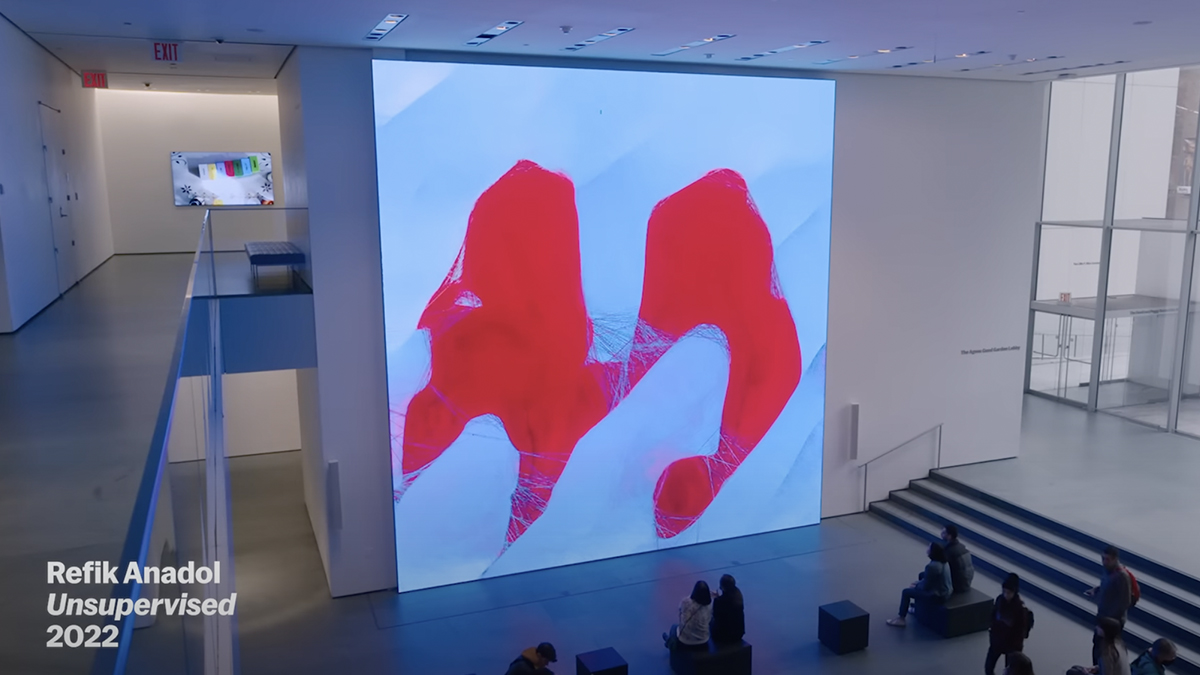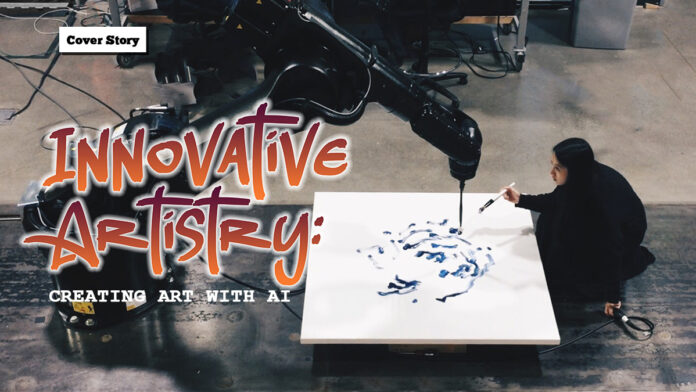Artificial intelligence (AI) is becoming an increasingly inevitable force in creative art. Some artists are embracing art with AI as a collaborator, using it to evolve their artistic process. As technology advances, these artists are finding new ways to incorporate AI into their work, resulting in more innovative and unique expressions.
For example, Sougwen Chung, an internationally renowned artist and former MIT Media Lab researcher, collaborates with AI-driven machines to create art. Her work delves into the boundaries of human-machine collaboration. During her TED Talk, Chung shared how her robots seamlessly integrate with her artistic process.

Chung’s project series, Drawing Operations, features her collaboration with a robotic invention named “Drawing Operation Unit Generation” (D.O.U.G_1-2-3). This machine is designed to mimic her gestures in real-time. However, as a new creation, its results initially diverged from Chung’s movements. This discrepancy, however, led to an unexpected artistic discovery. D.O.U.G. further develops and operates using a visual algorithm trained on scanned images of her previous works. This technique, called “optical flow,” allows the robot to learn and process movement by tracking how objects move across a series of images. Chung understands that for D.O.U.G to function effectively, it needs to observe and learn to blend with her movements.
Her later robotic models, D.O.U.G. 4 and 5, are considerably more advanced. They integrate data from EEG (electroencephalogram) readings and alpha brain waves to better understand and mimic Chung’s movements. This fosters a more seamless and intuitive interaction between artist and machine, further enhancing the creative process. Her sixth robotic D.O.U.G. model named Genesis, is a collection of shapes created through a custom-made Bespoke VR process. The movement data it records from her are used to generate innovative spatial information. Each artwork Chung creates with D.O.U.G. exemplifies her belief that AI systems can inspire creativity through learning. As she argues, the meaning lies not just in the data itself, but in the human interpretation it evokes.
Refik Anadol is another innovative media artist who utilizes AI in his work. Anadol explores the potential of post-digital architecture through immersive environments in his projects and exhibitions. Some notable examples include Machine Hallucinations: Sphere, Museum of Modern Art – Unsupervised, J’Adore – AI Data Sculpture, and the recent Large Nature Model

Anadol employs open-source software to manage large datasets and utilizes a machine learning model called a Generative Adversarial Network (GAN). This model can create realistic images by learning from existing data sets. Anadol views AI as a “collective memory” that gathers and preserves human knowledge and experiences. This creates a dynamic and accessible source of information for learning, decision-making, and innovation. Much of his work showcases how AI can enhance creativity, making the artistic process more intuitive and interactive. Through his generative computer art, Refik Anadol demonstrates that data is not just raw information; it’s a resource that AI can leverage to expand human imagination.

Art with AI: Companion or Creator?
It’s important to distinguish between AI-generated art and AI as a collaborative tool in artistic creation. AI-generated art involves the AI creating the artwork independently, which raises questions about artistic authorship. For instance, the OpenArt AI website allows users to input concepts or ideas, and the AI generates artwork based on that input. In contrast, using AI as a companion in art creation refers to employing AI tools and assistants to support the artistic process, as exemplified by Sougwen Chung’s D.O.U.G. projects and Refik Anadol’s GEN AI model.
The Future of Art with AI
These artists are pushing the boundaries of AI, using it to discover new connections between technology and art. Their work not only enhances creativity but also challenges traditional artistic definitions. As AI continues to evolve, its role in the art world will undoubtedly continue to grow, fostering innovative approaches and redefining the human-machine interaction in art. Whether by collaborating with robots, visualizing data, or uncovering hidden technological potential, artists like Sougwen Chung and Refik Anadol are helping us understand and grapple with the growing influence of AI, which is transforming how art is created, experienced, and valued.
Words by Alyssa Silva
Also published in GADGETS MAGAZINE June 2024 Issue.
